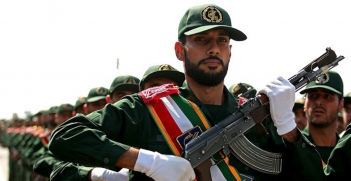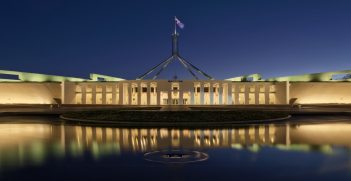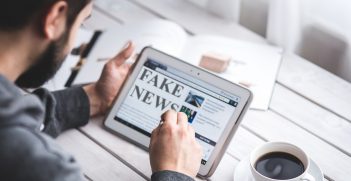Beyond Chaos and Conflict, the Middle East is Also a Place of Beauty.

In all the analysis and portrayals of conflict and strife in the Middle East, we shouldn’t forget that the region hosts a rich history and a vibrant cultural and intellectual life. Media organisations must take responsibility and present the region in its totality.
The attacks by Hamas on Israel on 7 October 2023 brought a renewed global focus on the Middle East, perhaps greater than any time since the so-called Arab Spring protests of 2010/2011. Despite efforts by Washington, Canberra, and others to focus resources and attention to the Indo-Pacific, these attacks, and Israel’s subsequent war on Gaza, have revamped media and public discourse on the region, attention which has only been intensified by the worsening humanitarian situation in Gaza, Houthi assaults on shipping in the Red Sea, and Iran-US brinkmanship, among other events.
In all of this, analysts, political leaders, journalists, and academics have once again reflected on the many challenges the region faces, perspectives that shape the public’s view of the Middle East and its people. Within this discourse, some of it lamentably inadequate or inaccurate, the Middle East has come to be seen as a collection of problems, among them violent extremism, despotism, religious fanaticism, tribalism, sectarianism, corruption, and the oppression of women and minority groups. Such a narrative is not new and has been true of the type of analysis offered about the Middle East for decades. No realistic observer of the region can deny this litany of challenges that has sapped its people of their potential and preoccupied foreign policy circles for so long. Yet there exists another side, one of beauty, rich culture, intellectual drive, a desire for progress, and constructive resilience. It is the birthplace of Cyrus the Great, hummus, algebra, Tahirih, irrigation, founders of major world faiths, and so many other gifts to humanity. It is a region that prides itself on its poetry and music, science and industry, hospitality and food. Yet these are cast out of the narrative presented to Western publics, sidelined by the shock and drama of armed conflict and contests for power.
As Iranian-American comedian Maz Jobrani once joked, “Just once I wish they would show us doing something good… like baking a cookie or something…. I’ve been to Iran, we have cookies. Just once I want CNN to be like “now we’re gonna go to Muhammad in Iran.” They go to some guy like, “Hello I’m Muhammad and I’m just baking a cookie. I swear to God. No bombs, no flags, nothing. Back to you Bob”.”
Of course, many in the West have done well to provide a full picture of the region, including from Australia. Anthony Bubalo’s Remaking the Middle East, Robert Bowker’s Tomorrow there will be Apricots, and the work of the ABC’s former Middle East correspondent Matt Brown, including Finding beauty in a land of bloodshed, to name a few. The national broadcaster also recently profiled Israel’s only community shared intentionally between Jews and Palestinians, a story of light in an otherwise relentless period of darkness. Yet in the mad rush of the news cycle, these kind of vignettes of colour hardly make the cut, if at all, and are so often confined to publications with smaller audiences than the nightly news. This needs to change. A preference for stories of despair over those of hope must give way to a responsibility of presenting the region in its totality. The public deserves to be accurately informed.
Social media, despite its challenges of quality, authenticity, perspective, and algorithms, presents perhaps a more accommodating platform. There, people from around the world see the many demonstrations of the Middle East and North Africa’s cultural depth – an old man reciting poetry in a Cairo street; the UAE’s emergence as an incubator for social media content creators from across the world; the thrilling movement of Dabke, a Levantine folk dance; insights into Iraq’s rich intellectual history; women in Iran distributing roses and sweets to their compatriots defying the compulsory hijab in the wake of Mahsa Jina Amini’s death; the beauty of Moroccan and Omani architecture; the viral spread across TikTok and Instagram of Egyptian singer Sherine’s song, Sabry Aalil, beyond Arab audiences, resulting in many cross-cultural remixes; and the many stirring words of the Persian poet Rumi, including:
Goodbyes are only for those who love with their eyes. Because for those who love with heart and soul there is no such thing as separation.
But – why should we care?
An appreciation for the beauty, or at the very least the non-violent, non-calamitous side of the Middle East, matters to Australia. The capacity to understand others prevents the kind of “othering” that produces at best an ambivalence about our nation’s foreign policy and at worst an institutional and societal worldview that breeds shortsighted strategic frivolity and disastrous foreign policy decisions. A region seemingly rife with angry people with a tendency to wage war is not one we can easily relate to. But we can connect with one that we know loves many of the things we do: music, family, friends, art, sport, science, and travel. While this has implications for trade and diplomacy, a sophisticated understanding of the region is most pressing in matters related to military action. The Middle East has been the scene of two of Australia’s longest and most expensive wars, and a number of other military and peacekeeping operations. It is also the birthplace of the ANZAC legend.
Above all, the answer to the question “why should we care?” should receive more than a response related to trade, strategy, and our GDP. We care because we are human. If we truly believe Australian values should animate our view of the world and our place in it, that they are worth defending and promoting, then we must see how at least some of those values are held in high regard by others as well. The media has a particular responsibility in conveying this as the institution most capable of impacting public perceptions and worldviews, a task that must be performed with wisdom.
Doing this across the globe, but particularly when covering the oft-problematised Middle East, means news organisations must ensure that coverage doesn’t consistently portray a one-dimensional view of the region. Inaccurate or biased analysis is too often broadcast or unchallenged, to the detriment of the public. In providing credible coverage of the region, Australia’s media organisations should draw on experts and journalists that have a sophisticated understanding of Middle Eastern culture and the historical underpinnings of its political realities (among them Yalda Hakim, Lydia Khalil, Amin Saikal, Chantelle Al-Khouri, Dellaram Vreeland, Nassim Khadem, and Rodger Shanahan).
Entertainment media also has a responsibility to present a balanced portrayal of the region and its people, eschewing a tendency to only gravitate toward narratives of violence. Broadcasting authentic foreign language films also widens perspectives, and the SBS deserves particular credit for this.
None of the above negates the troubled aspects of the Middle East. In fact, so many of these very people who we should strive to see in a fuller light are the greatest victims of the systems of oppression that we find so abhorrent, not the proponents of them. All the more reason to develop a greater understanding of who they are. Without a media landscape that offers a balanced view of the Middle East, acknowledging both the chaos and the beauty, such an endeavour is impossible.
Saba Sinai is a lecturer in agriculture at CQUniversity, Australia and a fellow with the Australian Strategic Policy Institute’s Northern Australia Strategic Policy Centre. The views expressed here are his own and do not necessarily represent those of his employer.
This article is published under a Creative Commons Licence and may be republished with attribution.





